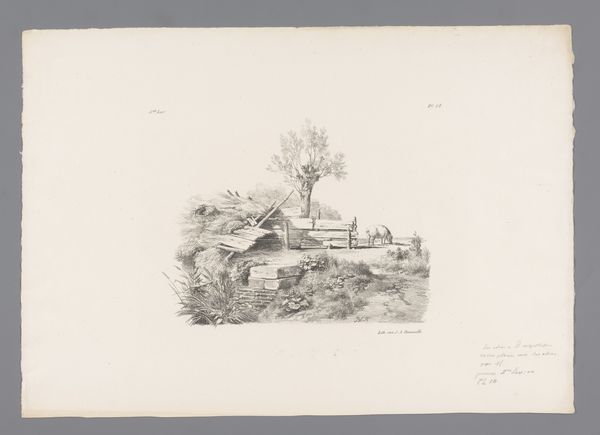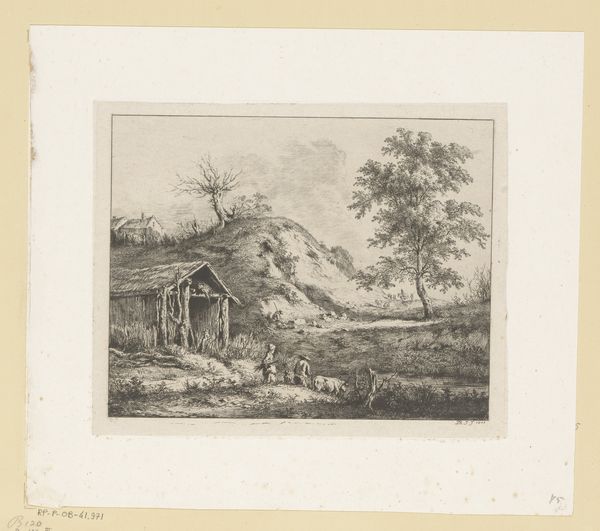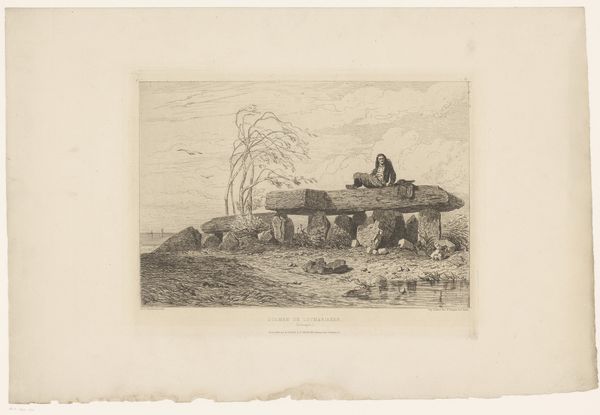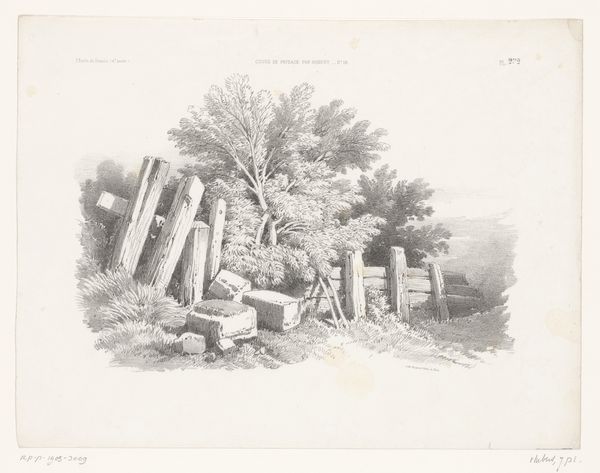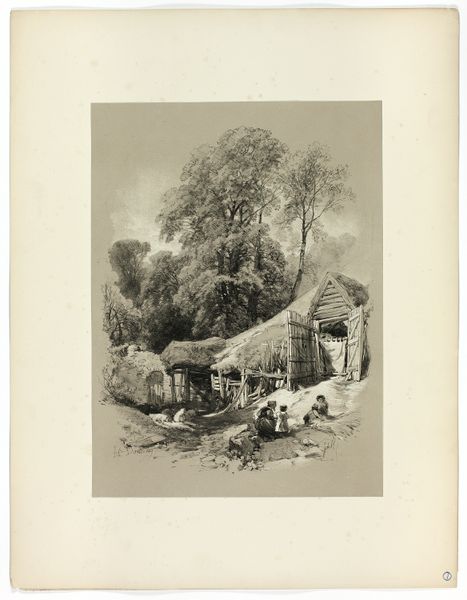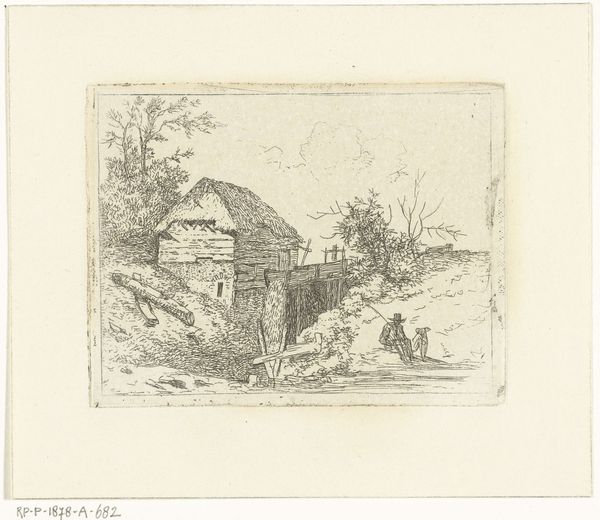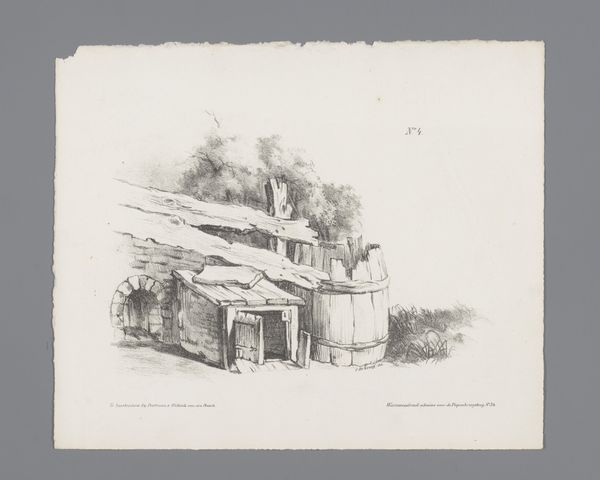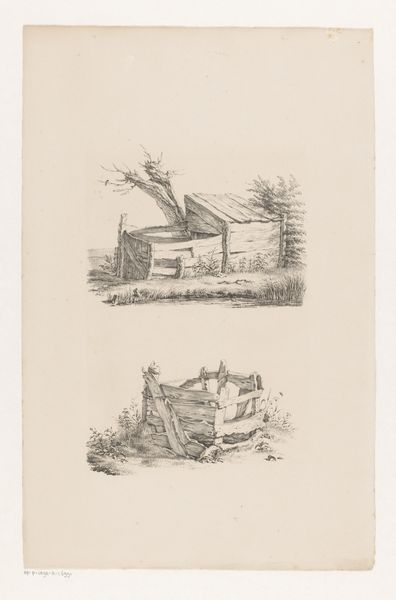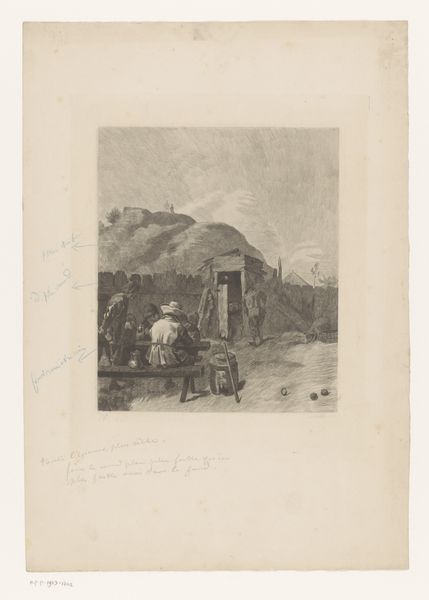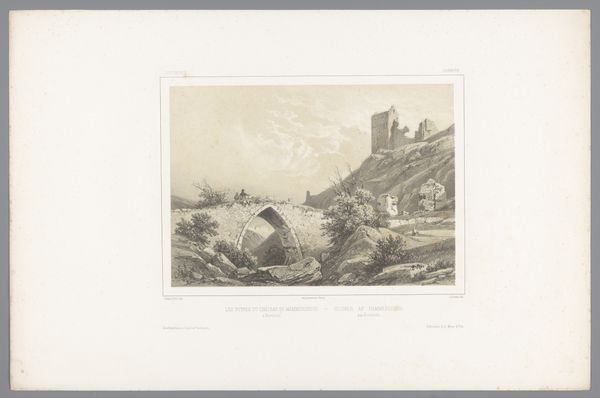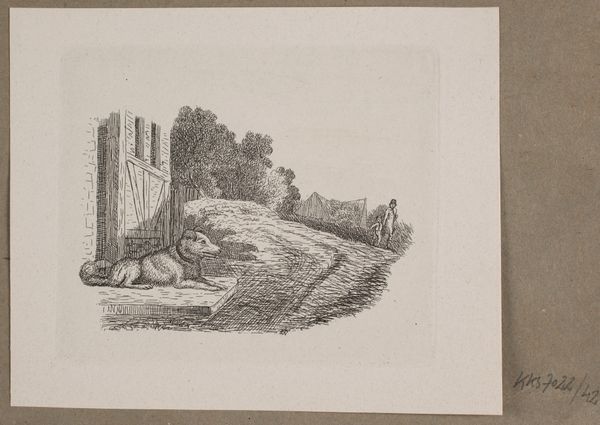
drawing, paper, ink
#
drawing
#
landscape
#
paper
#
ink
#
romanticism
#
realism
Dimensions: height 210 mm, width 250 mm
Copyright: Rijks Museum: Open Domain
Curator: Before us, we have Cornelis de Kruyff's "Hut met twee schoven," or "Hut with Two Sheaves," a work created sometime between 1809 and 1854. It's rendered in ink on paper, a humble subject elevated by delicate detail. Editor: Immediately, I’m struck by how… melancholic it feels. This simple hut, so precisely rendered, exudes a quiet solitude, like a forgotten stage prop. The shadows feel weighty. Curator: De Kruyff, during this period, was capturing the Dutch landscape with almost scientific precision. This work aligns with both the Realist and Romantic movements; documenting rural life while imbuing it with a certain idealized charm. Editor: The romantic element comes through strongest, I think. There's a vulnerability to the depiction. This isn't just a structure; it's a refuge, maybe even a symbol of impermanence. I keep thinking about the people who may have briefly used it, perhaps pausing from their field work or even living there during the war. Curator: And that interpretation resonates within its socio-political context, particularly given the Netherlands' history during that period, the upheavals of French occupation, and the struggles for independence which led to this work carrying symbolic weight beyond the everyday scene. Rural imagery offered an assertion of national identity. Editor: Interesting! To me, it’s as though the artist were drawn to capture what it would feel like to enter inside, like going through a dark doorway that leads you back into nature. Curator: I find it equally compelling as a quiet assertion of place within shifting political currents. Consider that De Kruyff positioned himself within a tradition of Dutch landscape painting that historically served as both aesthetic pleasure and patriotic declaration. Editor: The quietness, the shadows, the rustic nature, the attention given to this simple landscape… It all leaves me feeling wistful. Curator: It reminds us how landscapes, and their representation, carry embedded narratives about national identity and the artist's engagement within it.
Comments
No comments
Be the first to comment and join the conversation on the ultimate creative platform.
